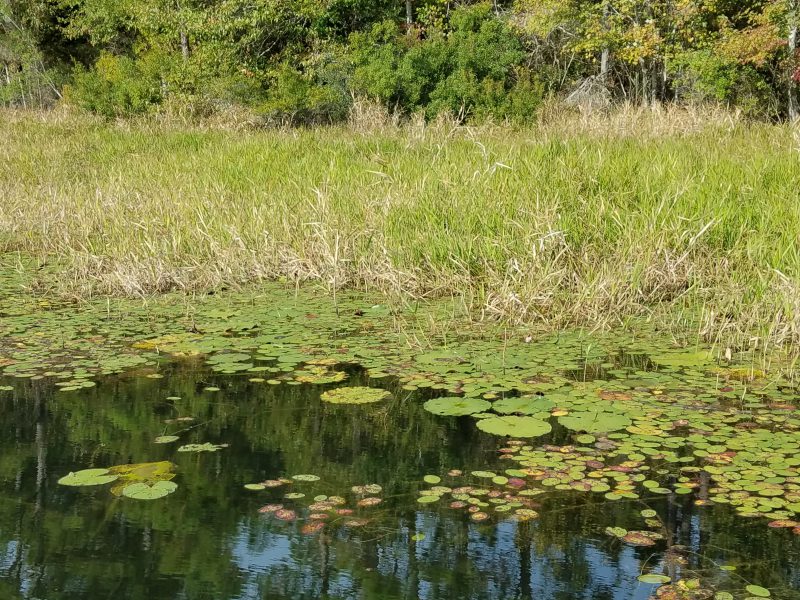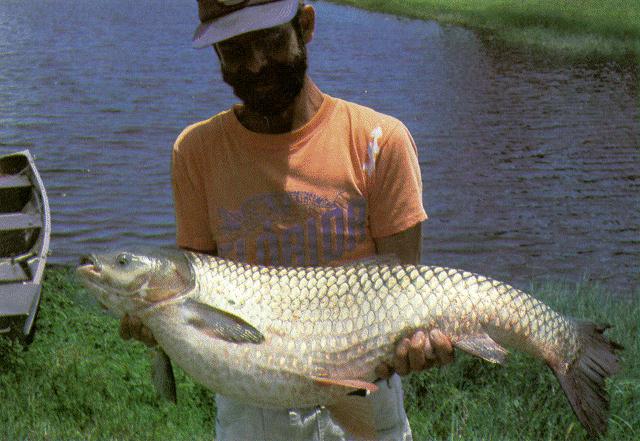 With warming weather comes weed problems, and the field is not the only place they can pop up. Farm ponds, whether used for irrigation, livestock, or just recreation, can often grow numerous pesky weeds that impact the use of these water bodies. A few lily pads might be nice to look at, but a pond clogged with weeds above and below the water’s surface can be troublesome.
With warming weather comes weed problems, and the field is not the only place they can pop up. Farm ponds, whether used for irrigation, livestock, or just recreation, can often grow numerous pesky weeds that impact the use of these water bodies. A few lily pads might be nice to look at, but a pond clogged with weeds above and below the water’s surface can be troublesome.
The first line of defense against aquatic weeds is proper pond design. Unless the pond is intended specifically to attract waterfowl, a depth of 6 to 8 feet or more is encouraged. Shallow water allows light to penetrate to the bottom of the pond, which in turn allows plants to grow in profusion. Deeper water also limits the amount of evaporation that occurs, which can lower the level of a pond significantly over the course of a summer.
Once weeds are present, however, control methods do not always need to involve the application of herbicides. Mechanical control is possible for some weeds, whether this is using a rake to drag big clumps of soggy plant matter out of the pond, or hiring a company with specialized equipment such as an aquatic weed harvesting boat. Mechanical control can be a good start even if herbicides are used later.
Before resorting to chemicals, however, pond owners should consider stocking with triploid grass carp. These are sterile, plant-eating fish that can be very effective in controlling weeds. A permit is required to stock these fish, which can be obtained from the Florida Fish and Wildlife Conservation Commission. Grass carp usually cost between $5 and $15 dollars each, and are stocked at a rate of 3 to 10 fish per acre. Stocking larger fish, at least 10-12 inches in length, will help avoid predation from other fish. It may take six months to a year for grass carp to become effective in controlling large amounts of weeds, and they must be restocked after 5 to 8 years.
If herbicides are necessary, there are numerous options for aquatic applications. It is important to choose a product labelled for use in aquatic situations, even if the active ingredient is the same as other products. For example, herbicides with the active ingredient glyphosate may be found for use in agricultural or landscape settings (Roundup, for example, is a well-recognized brand name), while those labelled for use in ponds have different formulations (and brand names, such as Rodeo). The two are not interchangeable.
It is important to correctly identify the weeds present before selecting an herbicide to use, as some may not be effective on certain weeds. You can find pictures and information on various noxious aquatic weeds at the Center for Aquatic and Invasive Plant’s plant directory, or contact your local Extension office for help with identification. The effectiveness of various chemicals on certain weeds can be found in our EDIS publication on the Efficacy of Herbicide Active Ingredients Against Aquatic Weeds. Again, contact your local Extension Office for help with any of these topics as well!
- When Grasses Collide – Centipede vs. Bahiagrass in Your Pasture - August 26, 2022
- Time to Think About Pond Weeds - March 18, 2022
- Avoiding Pesticide Resistance - September 24, 2021

